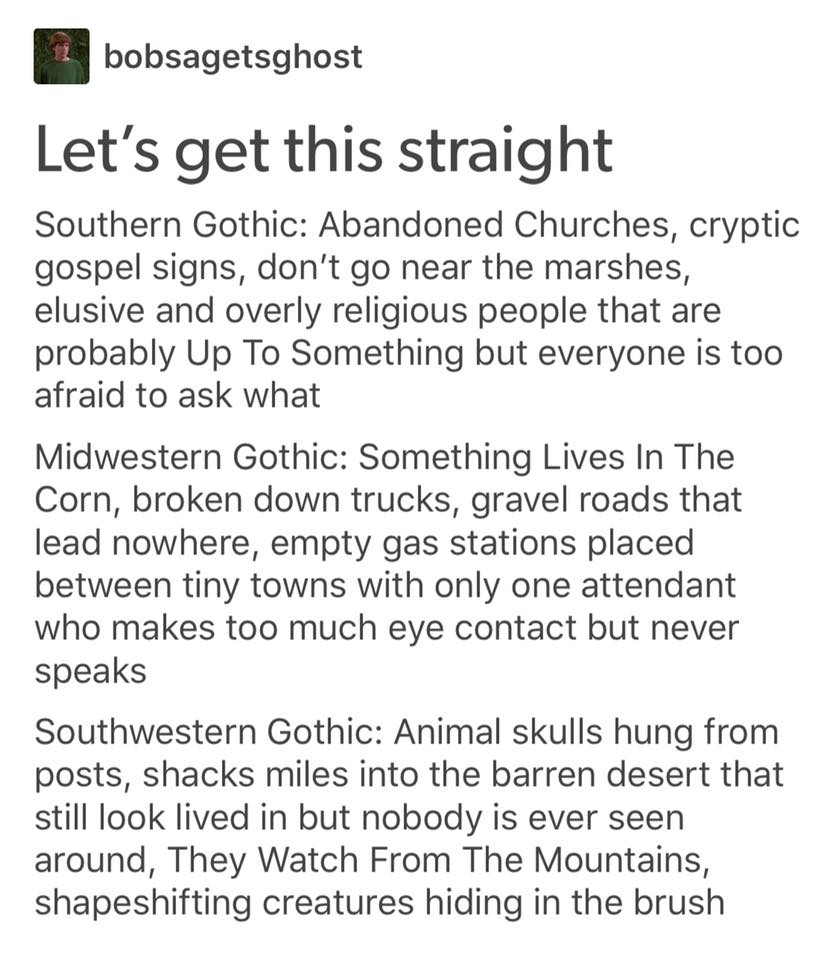 Some memories are etched on my mind. Like that time when I mistook a roadie for Uriah Heep-guitarist Mick Box. What can I say in my defense? Almost everyone had long black hair with center parting and looked like Jesus in 1975. I spent well over a quarter of a film roll on the roadie before I realized my mistake. This was analogue times and film rolls and photographic processing were expensive. You had to choose your motifs and photo opportunities very carefully. I still have a couple of photos left from the concert stored in a cardboard box. However, no photo copies exists of the roadie. I think I threw them away in a state of disappointment and embarassment. The photo on the right is taken by me with my crappy time typical Instamatic camera. The blurry-grainy photo has since then bleached over time and suffered a minor crack damage. It depicts singer David Byron, recognized for his charismatic stage presence. In May 1974 (on the same stage) he was more drunk than usual. The heel of one of his platform shoes fell off and he fell slap-bang into the orchestra pit. His seven feet headlong fall was only slightly mitigated by the flower arrangements. His drinking eventually led to him being sacked from Uriah Heep in July 1976. David Byron died of alcohol-related complications in 1985. Sad story. Uriah Heep is still active. Mick Box is the only member from the band's founding in 1969 who is still active with the group. Looking at this crappy photo brings back memories. Things were quite different back then. It was perfectly natural for children at the age of thirteen to take the commuter train 40 miles on their own to attend a rock concert. Nobody raised an eyebrow. Today you would need a support team nearby texting you every five minutes. The zeitgeist was liberal. In elementary school you were allowed to bring records to the art lessons. One fall day we were pressing watercoloured maple leafs on paper. Uriah Heep's Live (January 1973) was spinning on the turntable. Our middle-aged teacher, who previously had been listening to bands like Deep Purple, Black Sabbath and Led Zeppelin without any enthusiam, suddenly started to think out loud. "This is good. I think I will buy this album to my son". The popularity of Uriah Heep ended there and then.
Some memories are etched on my mind. Like that time when I mistook a roadie for Uriah Heep-guitarist Mick Box. What can I say in my defense? Almost everyone had long black hair with center parting and looked like Jesus in 1975. I spent well over a quarter of a film roll on the roadie before I realized my mistake. This was analogue times and film rolls and photographic processing were expensive. You had to choose your motifs and photo opportunities very carefully. I still have a couple of photos left from the concert stored in a cardboard box. However, no photo copies exists of the roadie. I think I threw them away in a state of disappointment and embarassment. The photo on the right is taken by me with my crappy time typical Instamatic camera. The blurry-grainy photo has since then bleached over time and suffered a minor crack damage. It depicts singer David Byron, recognized for his charismatic stage presence. In May 1974 (on the same stage) he was more drunk than usual. The heel of one of his platform shoes fell off and he fell slap-bang into the orchestra pit. His seven feet headlong fall was only slightly mitigated by the flower arrangements. His drinking eventually led to him being sacked from Uriah Heep in July 1976. David Byron died of alcohol-related complications in 1985. Sad story. Uriah Heep is still active. Mick Box is the only member from the band's founding in 1969 who is still active with the group. Looking at this crappy photo brings back memories. Things were quite different back then. It was perfectly natural for children at the age of thirteen to take the commuter train 40 miles on their own to attend a rock concert. Nobody raised an eyebrow. Today you would need a support team nearby texting you every five minutes. The zeitgeist was liberal. In elementary school you were allowed to bring records to the art lessons. One fall day we were pressing watercoloured maple leafs on paper. Uriah Heep's Live (January 1973) was spinning on the turntable. Our middle-aged teacher, who previously had been listening to bands like Deep Purple, Black Sabbath and Led Zeppelin without any enthusiam, suddenly started to think out loud. "This is good. I think I will buy this album to my son". The popularity of Uriah Heep ended there and then.
 I have committed myself to follow the Prime Directive. The directive prohibits the protagonists from interfering with the internal development of other civilizations in the fictional universe of Star Trek. The rules are simple. "No identification of self or mission. No interference with the social development of said planet. No references to space or the fact that there are other worlds or civilizations." Things could go wrong. Leadership role-model Jean-Luc Picard hit the nail on the head: "History has proved again and again that whenever mankind interferes with a less developed civilization, no matter how well intentioned that interference may be, the results are invariably disastrous." My wife, who is a enlightened TNG-trekker, objected to my ill-considered commitment. Firstly, the Prime Directive only apply to less developed civilizations. The gothic country genre is, of course, the highest of civilizations. Secondly, I've violated the Prime Directive constantly by contacting artists, writing articles, reviews and blog posts. And moreover. My mission statement for the website "To explore and promote gothic country, southern gothic, gothic americana, american gothic and dark americana and ...whatever" is in open and direct conflict with the Prime Directive. I got myself into a difficult moral dilemma. Captain Picard always found a way. However, my ethical dilemma was solved brutally and in a blink. The Internet Foundation in Sweden, IIS, is an independent public-service organization that acts to ensure positive development of the internet. In their annual report "Swedes and the Internet 2018" they concluded that 98 percent have an internet access and 90 percent own a smartphone. But only 1 percent runs a homepage or blog. And, even a smaller percentage visit or follow them. Apparently, I belong to a civilization which is below the threshold of technological, scientific and cultural development. I don't have to think about following the directive. The directive protects me. My mind boggles when I think about it. It's like holodeck-gone-bad plot without the episode filler feeling.
I have committed myself to follow the Prime Directive. The directive prohibits the protagonists from interfering with the internal development of other civilizations in the fictional universe of Star Trek. The rules are simple. "No identification of self or mission. No interference with the social development of said planet. No references to space or the fact that there are other worlds or civilizations." Things could go wrong. Leadership role-model Jean-Luc Picard hit the nail on the head: "History has proved again and again that whenever mankind interferes with a less developed civilization, no matter how well intentioned that interference may be, the results are invariably disastrous." My wife, who is a enlightened TNG-trekker, objected to my ill-considered commitment. Firstly, the Prime Directive only apply to less developed civilizations. The gothic country genre is, of course, the highest of civilizations. Secondly, I've violated the Prime Directive constantly by contacting artists, writing articles, reviews and blog posts. And moreover. My mission statement for the website "To explore and promote gothic country, southern gothic, gothic americana, american gothic and dark americana and ...whatever" is in open and direct conflict with the Prime Directive. I got myself into a difficult moral dilemma. Captain Picard always found a way. However, my ethical dilemma was solved brutally and in a blink. The Internet Foundation in Sweden, IIS, is an independent public-service organization that acts to ensure positive development of the internet. In their annual report "Swedes and the Internet 2018" they concluded that 98 percent have an internet access and 90 percent own a smartphone. But only 1 percent runs a homepage or blog. And, even a smaller percentage visit or follow them. Apparently, I belong to a civilization which is below the threshold of technological, scientific and cultural development. I don't have to think about following the directive. The directive protects me. My mind boggles when I think about it. It's like holodeck-gone-bad plot without the episode filler feeling.
 I found this typology of gothic branches on internet (see image right). It may contain a certain element of generalization and exaggaration. Most of the time typologies are helpful in understanding a complex world by making it smaller and more easy to handle. Definitions and classifications are useful tools in this process. However, some tools are not very accurate, for example so-called genre maps (algorithmically-generated, readability-adjusted scatter-plot of the musical genre-space). They simply make no sense. One of the reasons to why I started this website was to bring some order in the "gothic country" genre and provide basic consumer guidance. The term "gothic country" was first attached to The Shivers, a husband and wife duo who explored the back roads of America in their RV in the 1990s. But what is "gothic country"? One very elegant but general defintion has been suggested by writer David Goodman: "Extremely laid back style with an intense focus on the supernatural, death, sorrow, and other themes and images found in Southern/Gothic literature." Amen to that. However, there are many different branches and twigs in the gothic country genre and you can approach the genre in different ways. In a previous blog entry I described the regional differences, read more here (opens in a new window). You have to be careful. The use of definitions and classifications sometimes gets out of control. In some academic fields people are busy with, not with research, but with inventing conspicuous terms, constructing far-fetched dichotomies and building new models. No content, only surface. Unfortunately, the empirical data doesn't always fit. Not even with the help of a shoehorn in stainless steel. In fact, using definitions and classifications is a balancing act. One should not walk on a tightrope because, as we all know, tightrope-walkers are doomed to fall one day. However, I'm walking on.
I found this typology of gothic branches on internet (see image right). It may contain a certain element of generalization and exaggaration. Most of the time typologies are helpful in understanding a complex world by making it smaller and more easy to handle. Definitions and classifications are useful tools in this process. However, some tools are not very accurate, for example so-called genre maps (algorithmically-generated, readability-adjusted scatter-plot of the musical genre-space). They simply make no sense. One of the reasons to why I started this website was to bring some order in the "gothic country" genre and provide basic consumer guidance. The term "gothic country" was first attached to The Shivers, a husband and wife duo who explored the back roads of America in their RV in the 1990s. But what is "gothic country"? One very elegant but general defintion has been suggested by writer David Goodman: "Extremely laid back style with an intense focus on the supernatural, death, sorrow, and other themes and images found in Southern/Gothic literature." Amen to that. However, there are many different branches and twigs in the gothic country genre and you can approach the genre in different ways. In a previous blog entry I described the regional differences, read more here (opens in a new window). You have to be careful. The use of definitions and classifications sometimes gets out of control. In some academic fields people are busy with, not with research, but with inventing conspicuous terms, constructing far-fetched dichotomies and building new models. No content, only surface. Unfortunately, the empirical data doesn't always fit. Not even with the help of a shoehorn in stainless steel. In fact, using definitions and classifications is a balancing act. One should not walk on a tightrope because, as we all know, tightrope-walkers are doomed to fall one day. However, I'm walking on.
 Most people would agree that you should respect the elderly. They've been through a lot. I haven't experienced two world wars, only two brutal format shifts. More precisely, shifts in sound storage medium. I would not wish anyone to experience such horrible times. I grew up with vinyl and cassettes, which eventually were replaced by the compact disc, which in turn was replaced by downloads and streaming. The first format shift to cd meant huge sacrifices. In 1990 I (literally) ditched all my vinyl. Not one of all the many used record stores in Stockholm were interested in any of my albums (except in Elton John's Goodbye Yellow Brick Road in yellow vinyl). The rest of the collection was spread for the wind. I went all in for audio cd. I wanted to be modern and future-proofed. I started to build up my record collection again, slowly but surely. The second format shift to downloads and streaming was perhaps even more brutal than the first. However, I played dead this time and didn't do anything drastic. Going back to vinyl was never an option after my post-traumatic ditching. We, the elderly, are too old to change format. A decade is more of a year for us. We are also keen to believe in a theory that says if you can't touch it it doesn't exist. We want a format that is tangible and lasting. People in my generation are bent and shaped to collect things in a physical format: for example stamps, trading cards and albums. The day of the last album produced in cd format is approaching inevitable (there's still pockets of resistance here and there). Therefore, I implore you, respect the elderly and release gothic country music in the cd format. Soon we are gone and then you can do as you please, but until then: respect the elderly and give us our plastic.
Most people would agree that you should respect the elderly. They've been through a lot. I haven't experienced two world wars, only two brutal format shifts. More precisely, shifts in sound storage medium. I would not wish anyone to experience such horrible times. I grew up with vinyl and cassettes, which eventually were replaced by the compact disc, which in turn was replaced by downloads and streaming. The first format shift to cd meant huge sacrifices. In 1990 I (literally) ditched all my vinyl. Not one of all the many used record stores in Stockholm were interested in any of my albums (except in Elton John's Goodbye Yellow Brick Road in yellow vinyl). The rest of the collection was spread for the wind. I went all in for audio cd. I wanted to be modern and future-proofed. I started to build up my record collection again, slowly but surely. The second format shift to downloads and streaming was perhaps even more brutal than the first. However, I played dead this time and didn't do anything drastic. Going back to vinyl was never an option after my post-traumatic ditching. We, the elderly, are too old to change format. A decade is more of a year for us. We are also keen to believe in a theory that says if you can't touch it it doesn't exist. We want a format that is tangible and lasting. People in my generation are bent and shaped to collect things in a physical format: for example stamps, trading cards and albums. The day of the last album produced in cd format is approaching inevitable (there's still pockets of resistance here and there). Therefore, I implore you, respect the elderly and release gothic country music in the cd format. Soon we are gone and then you can do as you please, but until then: respect the elderly and give us our plastic.
I encountered this magnificent tarot deck when I was excavating the many layers of Sons of Perdition's third album "Trinity", read more here (opens in a new window). It's called the Rider-Waite tarot deck. The amazing cards were drawn by illustrator Pamela Colman Smith from the instructions of A. E. Waite and published by the Rider Company, read more here (opens in a new window). The tarot deck was originally published in 1910. It wasn't really surprising to find a reference to tarot on Trinity. There are numbers and symbols everywhere on the album. In the physical release of Trinity an exclusive tarot card was included, "The Fool" by artist, illustrator, cartoonist and letterer Christoph Mueller. The Mueller card differs from the frivolous and unconcerned fool in the Rider-Waite deck (who is just about to step over a cliff). The Muller fool is frantic and uncontrollable, check it out here (opens in a new window). It can easily be explained. "Trinity tells the story of a fool’s hellish journey through the blood-soaked deserts of the American Southwest through religious, occult, and alchemical allusions". There are 78 cards in a tarot deck and 22 of them constitutes the so-called Major Arcana (picture cards that serve as a permanent trumps). The Major Arcana begins with "The Fool" (no. 0) and ends with "The World" (no. 21). Well, it doesn't really end. It begins again like an ouroboros. The 22 cards in the Major Arcana are displayed one by one in the image carousel to the left. To mention a few of the highlights in the Rider-Waite deck: "The Fool" (no. 0), "The Empress" (no. 3), "The Lovers" (no. 6), "The Hermit" (no. 9), "The Hanged Man" (no. 12), "Death" (no. 13), "The Tower" (no. 16), "The Sun" (no. 19) and "Judgement" (no. 20). My personal favorite is "The Magician" (no. 1). Tarot iconography has The Magician’s right hand pointing toward the heavens while his left points to the earth, showing his ability to connect the two. In numerology, every number is significant, yet there are three numbers which have special characteristics: 11, 22 and 33. These are the "master numbers". Twenty-two represents the ultimate capacity to make dreams into reality. There are references to 22 on Trinity. In the opening song, "Fallout", there's a line "Twenty-two is the crown". Tarot divination says nothing to me about my life. For my part, I only appreciate the aestetic qualities. Still, twenty-two is the crown. No doubt about it.
